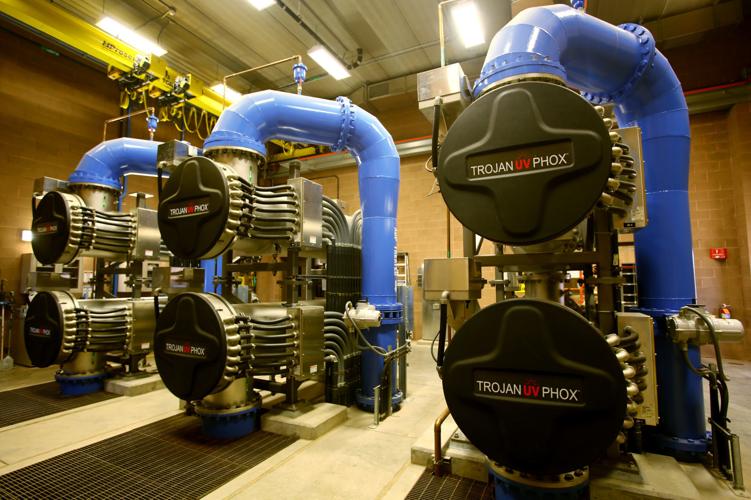Levels of a toxic contaminant have sharply declined in water served to some Tucson customers since the city adjusted the operations of a south-side treatment plant last month.
In August, Tucson Water temporarily shut down the treatment plant after discovering it was sending water to thousands of customers containing unexpectedly high levels of PFAS compounds. City officials don’t know how long water with elevated levels was served to customers.
They have said they believed the water was safe to drink even at the higher levels but have slashed the contaminant levels “out of an abundance of caution” and to increase the margin of safety.
Formerly used in a wide range of products including firefighting foam and nonstick containers, PFAS (perfluoroalkyl) compounds are known to be highly persistent in the environment and are suspected of causing cancer in humans over lifetime exposure.
Levels reached 29 to 30 parts per trillion in samples taken Aug. 1 at three points. They were in the Menlo Park area, near Speedway and Main Avenue and at Grant and Silverbell roads.
That’s less than half than the maximum level the Environmental Protection Agency recommends in its 2016 health advisory for the compounds.
But it’s still significantly more than another agency, connected with the U.S. Centers for Disease Control, recommends.
After adjusting the treatment plant’s water supplies, Tucson Water’s most recent samples, taken Oct. 4, show a range of 8 to 8.3 parts per trillion.
That compares favorably to the 18 parts per trillion maximum level recommended for the same compounds by the federal Agency for Toxic Substances Disease Registry, part of the CDC.
A fourth October sample, taken at the city’s Santa Cruz Lane Reservoir just west of the Interstate 10-Interstate 19 interchange, showed 8.7 parts per trillion. That sampling point gets water from the treatment plant and from Central Arizona Project water, piped in from the Avra Valley and containing no detectable PFAS compounds. The two supplies are blended in an underground vault.
The utility hadn’t sampled from that point in August. Until then, it had used another nearby sampling point that city officials mistakenly thought contained mostly or all treatment plant water but have since learned contained other water as well.
The contaminant levels are lower in the new water samples because of the adjustments the utility made at its treatment plant. First, Tucson Water cut off flows to the treatment plant from the three underground wells with the worst PFAS contamination, utility spokesman Fernando Molina said.
Second, the city began blending the treatment plant’s water with CAP water, to reduce contamination further.
Known as the Tucson Airport Remediation Project, the treatment plant was started up again in mid-September. The plant, near I-19 and Irvington Road, has been operating to clean up other contaminants, including trichloroethylene, since 1994.
The plant’s treated water goes to a large V-shaped area, population about 60,000, stretching north from East 29th Street through downtown to just north and west of the city limits, and flanking Interstate 10. The area spans as far west as the Tucson Mountains foothills and as far east as North Campbell Avenue and beyond.
There is a national scientific disagreement over what PFAS levels are safe to drink. Some states, including Arizona, are following the EPA’s lead, while others are setting or considering setting tighter advisories or outright limits.
In the long run, Tucson Water officials say they plan to upgrade the treatment plant to be able to better treat the PFAS. That will involve testing and installing carbon filtering materials that can remove the compounds for now. Eventually, they’ll build an entirely new plant that can clean up PFAS, TCE and 1,4-dioxane, a third chemical that’s been found in south-side groundwater.
For now, “I’m totally comfortable” with the drinking water being served at the lower PFAS levels, said Gene Einfrank, who recently stepped down as neighborhood association president in Menlo Park. “I guess if we’re looking at the science it seems OK to me. If I look at our environment and things toxic to it we’re dealing with all the time, at levels above the standards, that’s an infinitesimal amount of that substance in our water.”
Chris McCreedy, who lives in the Dunbar Spring area near the Main and Speedway sampling site, said he’s glad Tucson Water took this problem seriously and reduced contaminant levels, even though officials thought it was safe.
But it sounds to him like the issue continues. “I just think they should fix it,” he said.





